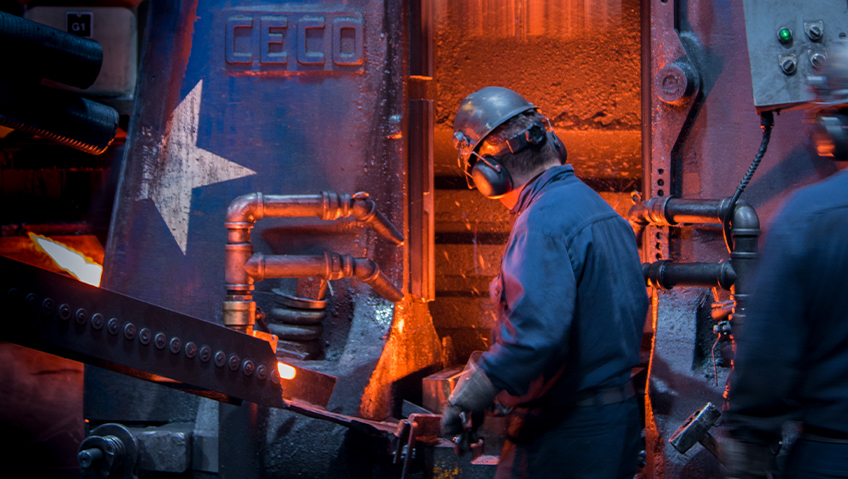The National Electrical Manufacturers Association (NEMA) is an organization that has played a key role in the development of the electroindustry. NEMA works to support the sector’s growth and provides its members with a competitive advantage in the industry’s modern landscape.
“An ANSI-accredited standards developing organization,” NEMA gives its members a voice and supports them by “expanding market opportunities, acquiring exclusive business intelligence, removing market barriers, building supply chain connections, and harnessing innovation,” the association’s website describes.
Founded in 1926, the association’s role has proven critical. “It was important in standardization of technologies and safety,” says NEMA President Debra Phillips. “Safety was a huge part of the birth of widespread electricity. A main portion of its mission at that time was to develop industry standards that would be widely adopted to keep this technology safe so that consumers could use it [and be] safe from health hazards, safe from fires, safe from explosions. That major role of standardization and safety has been core and central since the association was formed and that continues today.”
Now, after decades of growth, “We have a library of over 700 standards for all kinds of electrical technologies that keep those devices safe and standardize our national electrical system,” Phillips says. “Many of our standards have been adopted into the National Electrical Code and are referenced in regulations at the state and federal levels. So that part of the association, that value that we bring to the industry, has been part of our legacy from the beginning.”
NEMA works closely with the government to represent and support the industry, “and that could be at state and local level for those that are looking at electrical code adoption or at the federal level around regulations that are affecting the industry,” says Phillips. “We play that role as the voice of the industry to bring the perspective of electrical manufacturers.”
Providing market intelligence is another critical part of NEMA’s mission. “We collect data from our members, help them understand market dynamics so that they can make informed decisions regarding their businesses and their technology,” Phillips says.
Currently, NEMA is zeroed in on three major areas of activity. These are related to macro trends that affect the full gamut of electrical manufacturers, who can be involved with anything from lighting and HVAC systems to motors and wires. “It’s a pretty diverse mixture,” Phillips says, “but there are some things that are going on across society that have a general impact across all of those technologies and companies, and that’s where we’ve been focused.”
The first area of NEMA activity is infrastructure investment. “In late 2021, Congress passed the Bipartisan Infrastructure Law, which is spending $1.2 trillion to modernize our nation’s infrastructure,” Phillips explains, “and of that $1.2 trillion, about a third of it is being invested in some type of electrical infrastructure.” This includes the electrification of ports and transportation systems, electric vehicles, and automation technologies.
“So we’ve really been focused on understanding what’s in that package, how those dollars are being rolled out, how they’re going to be spent,” she says. “There are about four major federal agencies that are directing that funding, but a lot of it is flowing through state and local agencies, and so we’ve been spending time trying to educate on what’s the best, highest-value use of those dollars on those technologies so that they can be future-proofed and we’re not spending money on technologies that are going to be obsolete in ten years.”
As part of this activity, NEMA has “ramped up a portal that allows members to track those dollars as they’re being released so that they can have a line of sight into which agencies and individuals are controlling the spend. It gives them the ability to bring their products and technologies forward for investment.”
NEMA’s focus on infrastructure extends to multiple other laws and acts, including the CHIPS Act and the Inflation Reduction Act, as well as private investment. “A lot of federal money is being channeled toward electrification and electrical infrastructure modernization, which is great,” says Phillips, “and accompanying that public spend are private sector dollars. We have an environment where this country is, at a federal level, investing in infrastructure, and we’re also seeing a huge amount of interest from the private sector pouring in as companies start to invest in manufacturing facilities in this country, given this enabling environment that’s been created through legislation.”
Around $6 billion in private sector investments have been announced over the last year or so, in addition to the public sector dollar. “There’s just been a huge amount of funding that’s been coming in to modernize infrastructure and bring some critical manufacturing within this industry back to this country,” Phillips shares. “So that focus on infrastructure has been a big, big part of what we’re focused on and watching and supporting.”
NEMA’s second area of activity centers on the supply chain. “Our industry, like many others across the economy, experienced quite a crunch in raw materials during COVID,” Phillips explains. “Much of that has alleviated; however, there are still a few critical supply chain areas that we’re concerned about.” Electrical steel, critical minerals, and chips are all at risk for shortages.
NEMA recently led a coalition to ask the White House to host a summit on electrical steel and address the limited number of producers in the United States. “We see the demand for electrical steel increasing dramatically,” Phillips shares. “The production is already in short supply here and we think that that’s going to be exacerbated over time.”
Critical minerals are “a really important part of the new electrical economy,” she explains. “They’re critically important for battery storage in particular. It’s important that this country has access to those critical minerals here, where they can be produced safely under a very modern and robust regulatory regime so that we’re not reliant on other countries.”
Ensuring that electrical manufacturers have an adequate supply of chips is also critically important. “Many of our products are becoming smart; they have chips embedded in them [but] they’re not the high-tech chips that are being used today in automobiles. They are legacy chips that are not as advanced, and we want to make sure that we have adequate domestic supply of those types of chips. In fact, there’s a portion of funding in the CHIPS Act specifically for those types of chips that are intensely used by this industry and allow our buildings and our infrastructure to continue to operate. So we’ve been very active in that part of the infrastructure equation.”
NEMA’s third area of activity involves the energy transition. This effort considers the “move away from more carbon-intensive sources of our energy in this country to more electrified sources and what role we, as a trade association, and our companies as technology providers, play to accelerate that transition,” says Phillips. “As we’re going through that transition, we’re making sure that our grid stays resilient, that we’ve got the appropriate energy efficiency technologies to take pressure off the grid, and that we invest in renewables, energy storage, and other technologies that are going to promote this transition.”
“We’ve been doing a good bit of mapping in this area,” she adds. “We launched an interactive map that shows the policy enablers as well as key barriers for us making this journey through the energy transition and also advancing legislation that really hits on the energy efficiency pieces that we think are going to be critical to getting through this transition and taking pressure off the grid.”
After leading the industry for nearly a century, NEMA is more than ready to support the industry as it moves into the future. From promoting infrastructure investment to ensuring the availability of raw materials and shepherding manufacturers through the energy transition, the association remains confidently at the helm, steering the industry forward.






